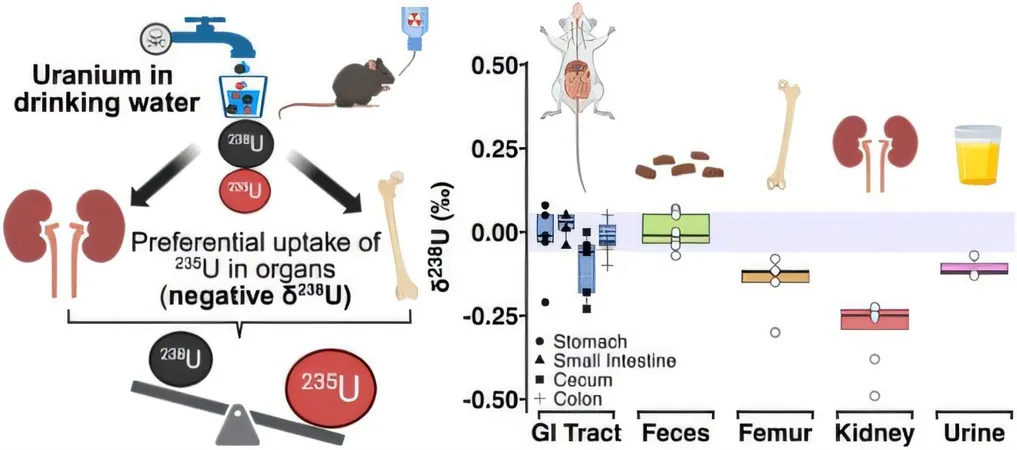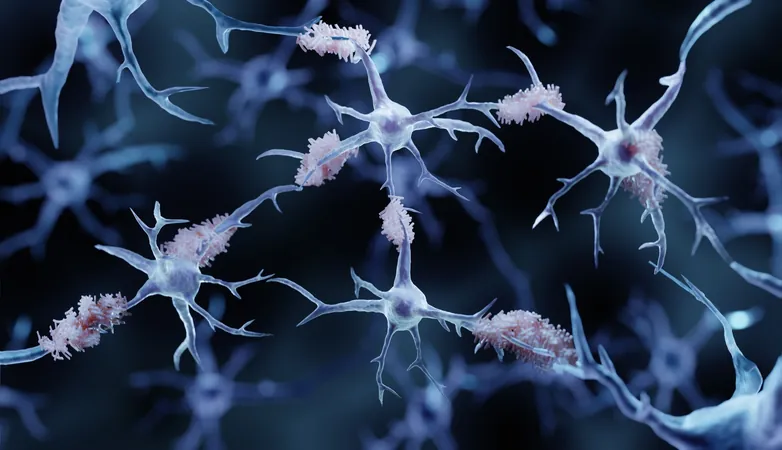
Revolutionary Biomarker Signals Uranium Damage in Kidneys: A Public Health Alert!
2025-07-21
Author: Yu
New Discovery: Uranium as a Silent Kidney Threat
Researchers at Columbia University’s Mailman School of Public Health have made a groundbreaking discovery that could change our understanding of kidney health. They’ve identified a unique biomarker in uranium’s isotopic composition that can noninvasively indicate the accumulation of uranium in the kidneys, offering an early warning system for potential kidney damage.
Understanding the Risk: Widespread Contamination
According to federal data, nearly two-thirds of community water systems in the U.S.—affecting around 320 million individuals—show traces of uranium. Alarmingly, about 2% of these systems exceed the EPA’s safety threshold of 30 micrograms per liter. Private wells, which serve roughly 15% of the population, follow suit, with nearly 4% surpassing the acceptable limit.
The Dual Threat of Uranium: Radioactivity and Chemical Toxicity
While uranium is widely known as a radioactive element, its chemical toxicity—especially concerning kidney health—is garnering significant attention. Research suggests that even low uranium levels can lead to detrimental effects on kidney function. "Our results highlight the urgent need for awareness in communities like those in the Great Plains and Colorado Plateau where legacy mining and natural deposits pose significant risks," noted senior author Dr. Anirban Basu.
Tackling Kidney Damage: Urgency for Detection
Uranium is primarily eliminated through urine, but a portion can accumulate in the kidneys, leading to chronic damage over time. Current methods to assess uranium levels in the body fall short, leaving a crucial gap in understanding kidney health risks. As doctoral student Catherine Lucey emphasized, "This is a major hurdle in preventing long-term kidney damage linked to uranium exposure."
Promising Results: Animal Studies Pave the Way
In new mouse experiments, uranium was found to accumulate rapidly in both kidney and bone tissues after exposure, showcasing clear isotopic shifts within just 7 to 14 days. This invaluable in vivo evidence paves the way for potential breakthroughs in monitoring and preventing kidney damage.
Towards Precision Health: Urgent Next Steps
The ability to track uranium’s isotopic signature in urine could revolutionize how we monitor kidney exposure, particularly in high-risk communities. "This study lays the groundwork for developing precision biomarkers that enable timely interventions, potentially averting irreversible kidney issues," said Lucey.
A Call to Action: Improving Public Health Surveillance
This research is part of a broader initiative to enhance environmental health surveillance and create effective monitoring tools for metal exposure in vulnerable populations. Future studies are set to explore longer exposure durations and lower uranium levels, aiming to unravel the complexities of uranium’s long-term health implications.
As awareness grows, proactive measures to address this environmental health crisis become increasingly critical.




 Brasil (PT)
Brasil (PT)
 Canada (EN)
Canada (EN)
 Chile (ES)
Chile (ES)
 Česko (CS)
Česko (CS)
 대한민국 (KO)
대한민국 (KO)
 España (ES)
España (ES)
 France (FR)
France (FR)
 Hong Kong (EN)
Hong Kong (EN)
 Italia (IT)
Italia (IT)
 日本 (JA)
日本 (JA)
 Magyarország (HU)
Magyarország (HU)
 Norge (NO)
Norge (NO)
 Polska (PL)
Polska (PL)
 Schweiz (DE)
Schweiz (DE)
 Singapore (EN)
Singapore (EN)
 Sverige (SV)
Sverige (SV)
 Suomi (FI)
Suomi (FI)
 Türkiye (TR)
Türkiye (TR)
 الإمارات العربية المتحدة (AR)
الإمارات العربية المتحدة (AR)